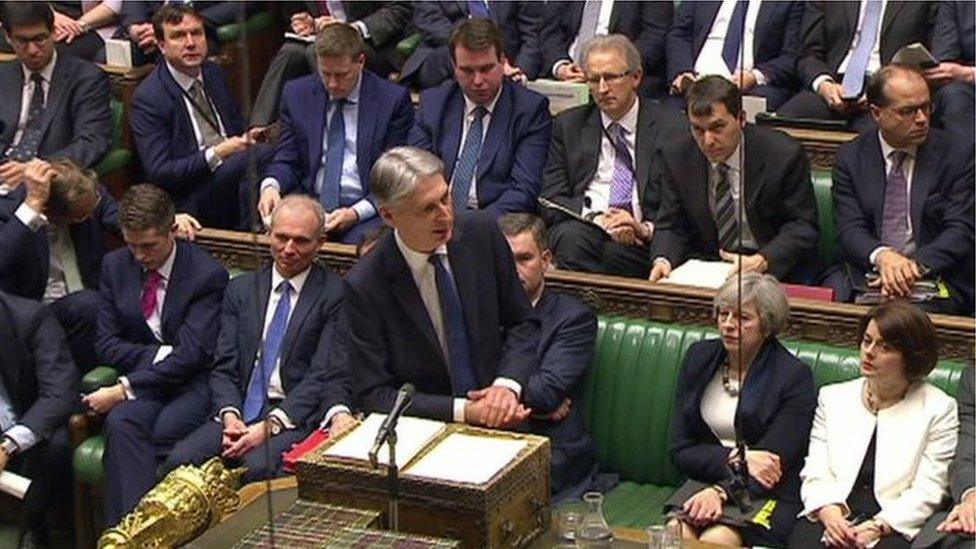NI Executive to receive extra £120m after budget
- Published

The chancellor's major policy change was to announce an increase in national insurance payments for many self-employed people
The Northern Ireland Executive will receive a small amount of additional funding as a result of the budget.
There will be an extra £90m for day-to-day spending through to 2019-20 while the capital budget will get an extra £30m million through to 2020/21.
Stormont's annual budget for day-to-day spending is around £10bn, while the capital budget is around £1bn.
The amount Stormont will have for day-to-day spending is still expected to fall in the period from 2015-2020.
The money comes on top of £250m earmarked for Northern Ireland in the Autumn Statement - also payable over the next four years - said Alan Shannon, an economist with financial services firm PwC in Northern Ireland.
"While the overall £370m increase is welcome, once inflation is taken into account, it represents an overall decline in cash available to the region, and sets a distinct tone for continued austerity," he said.
Stormont is currently without an Executive and has not set a budget for 2017/18.
Self-employed blow
If a budget is not set within the next three weeks, civil servants will take control of Stormont's finances.
That will allow public services to continue operating, but the head of the Civil Service has warned that no new project or programme can be launched in the absence of ministerial endorsement.
The chancellor's major policy change was to announce an increase in national insurance payments for many self-employed people.
National insurance is effectively a form of income tax.
Currently employees pay national insurance at a rate of 12% on earnings of between £8,000 and £43,000.
Self-employed people pay at a rate of just 9%. That will now increase to 10% next year and 11% the following year.
The Treasury says only self-employed people with profits above £16,250 will end up paying more.
It added that, when combined with income tax changes, only someone with profits of more than £32,900 in 2019-20 would be worse off overall.
About 130, 000 people in Northern Ireland are self employed equivalent to 15% of the workforce.
In the construction sector, about 40% of workers are self employed.
- Published8 March 2017
